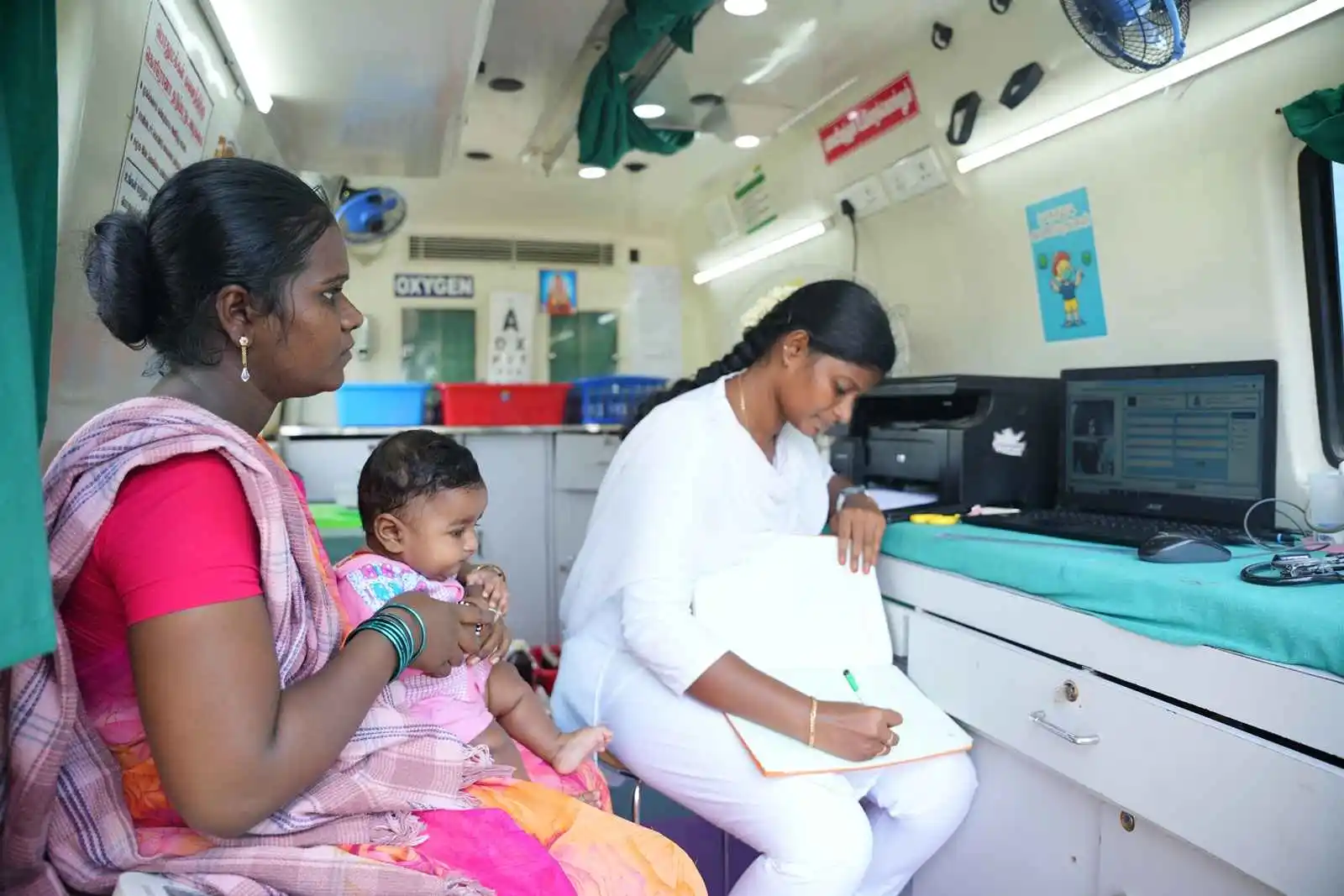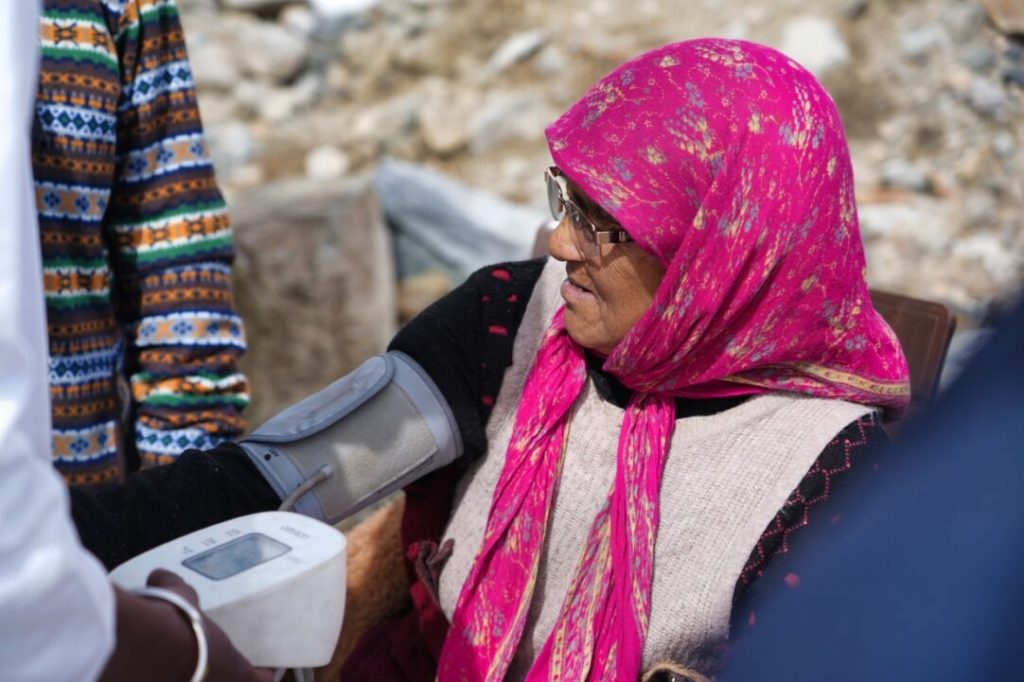Primary healthcare, often considered the frontline of any healthcare system, serves as the foundation upon which the entire structure of public health rests. The World Health Organization (WHO) highlights that effective primary care can address 90% of healthcare needs, emphasising that if primary services are strong, secondary and tertiary facilities will not be overwhelmed.
In low-income countries, primary healthcare investments have shown to reduce mortality rates and prevent disease escalation. In Rwanda, for instance, investment in primary care reduced mortality rates among children under five by more than 60% between 2000 and 2015.
In India, with its three-tier healthcare model, primary healthcare is the gateway through which communities first engage with the healthcare system. This entry-level care focuses on prevention, early diagnosis and management of common conditions, forming the base for secondary and tertiary care, which address more complex health needs. This interconnected system is particularly important in countries like India, where a vast population relies on public healthcare. In a country with limited resources and an enormous healthcare burden, investing in a solid primary healthcare infrastructure can ensure more effective and equitable healthcare across all levels.
The Role of Primary Health Care
One of the primary functions of primary health care is disease prevention. Preventive measures such as vaccinations, regular health screenings and patient education can significantly reduce the incidence of disease. This approach saves lives and lessens the load on hospitals and advanced healthcare facilities, which can then prioritise more severe health cases.
Strengthening primary health care would allow hospitals to focus on more complex cases, thereby enhancing the quality of care across the system. For instance, reducing untreated diabetes cases at the primary level would alleviate the number of people requiring dialysis or specialised treatments later on. This shift not only increases efficiency but also builds a proactive rather than reactive healthcare model, focusing on prevention and early intervention.
Early Diagnosis and Timely Referral
Early diagnosis of diseases is one of the essential aspects of primary health care. Healthcare providers in primary settings are often the first to detect symptoms that could indicate serious health conditions. By conducting regular screenings and check-ups, primary healthcare professionals can identify issues like hypertension, diabetes, and early cancer signs before they become severe. With better primary healthcare, diseases that might have escalated to severe cases requiring secondary or tertiary care can be managed at an early stage, ultimately reducing both the economic and social burden on individuals and families.
Why invest in Primary Health Care?
Investing in primary health care can be economically beneficial. A study by the WHO suggests that investing an additional USD200 billion a year on scaling up primary health care across low and middle-income countries would potentially save 60 million lives, increase average life expectancy by 3.7 years by 2030. In addition, a well-functioning primary healthcare system can significantly reduce healthcare costs for individuals, families, and governments.
In India, healthcare expenses are a significant concern, with many households facing financial hardship due to out-of-pocket expenditure on healthcare. Strengthening primary healthcare can help prevent this by reducing the need for expensive interventions at secondary or tertiary levels. When primary healthcare is adequately funded and accessible, individuals are more likely to seek care early, which can prevent illnesses from becoming severe and costly. This approach aligns with the Sustainable Development Goals, aiming to provide universal healthcare access and reduce poverty by lowering the financial strain on families.
The Interdependency Between Primary, Secondary and Tertiary Care
Primary, secondary and tertiary care are interdependent layers of a comprehensive healthcare system. When primary care functions effectively, secondary and tertiary facilities are less likely to become overburdened. Primary care addresses common health issues and preventive services, while secondary care manages more complex but still non-emergency cases. Tertiary care handles the most advanced and specialised treatments, such as surgeries and cancer treatment.
In India, the integration of primary, secondary and tertiary care is crucial to meet the healthcare demands of a large and diverse population. Initiatives like Ayushman Bharat aim to strengthen this linkage by creating a network of PHCs, HWCs and hospitals, thereby ensuring a coordinated approach to patient care. A well-structured healthcare system allows patients to move seamlessly from one level to another based on their health needs, preventing delays in treatment and improving overall outcomes.
The Importance of Community Involvement
A robust primary healthcare system extends beyond medical services. Local healthcare workers, volunteers and leaders play vital roles in promoting healthy behaviors, educating about health risks, and encouraging timely medical intervention. This approach tailors healthcare to diverse population needs, particularly in countries like India.
In rural areas with limited healthcare access, community health workers bridge gaps between healthcare systems and communities. Initiatives such as India’s Accredited Social Health Activists (ASHAs) adapted from the Barefoot doctors in China demonstrate how community engagement enhances healthcare delivery. ASHAs provide crucial services, including maternal and child health support, improving grassroots health outcomes as well as encouraging people to visit higher healthcare systems when situations aggravate. Thus, community participation fortifies primary healthcare, ensuring it serves as a strong foundation for advanced levels of care and systemic resilience.
The Bottom Line
Primary healthcare is much more than the first level of care—it is the foundation upon which the entire healthcare system stands. From disease prevention to early diagnosis, cost savings and health equity, primary healthcare plays an indispensable role in creating a healthy society. In India, strengthening primary health care is essential to address the vast health needs of the population and reduce the burden on secondary and tertiary facilities.
A resilient primary healthcare system not only supports advanced care but also contributes to long-term public health resilience and economic stability. Embracing primary healthcare as the bedrock of healthcare is vital for a fairer, more accessible, and more efficient system that benefits all.
Smile’s Healthcare Work
Smile Foundation’s healthcare initiatives emphasise the critical role of primary healthcare as the cornerstone of an effective health system. Through its Mobile Medical Units (MMUs), named Smile on Wheels (SoWs). we bring preventive care, early diagnosis and treatment to underserved communities, ensuring healthcare access at the grassroots level. By addressing common health issues and promoting awareness about hygiene and disease prevention, Smile Foundation alleviates the pressure on secondary and tertiary care facilities, creating a more equitable healthcare ecosystem.
The Foundation recognises the importance of early diagnosis and timely referrals in preventing disease escalation. With regular health camps and screenings, Smile Foundation identifies and manages conditions like diabetes and hypertension in their initial stages, reducing the need for costly interventions later. These efforts not only improve individual health outcomes but also reduce the financial burden on families, aligning with the Sustainable Development Goals to make healthcare accessible and affordable for all.
Community engagement is central to our approach. By training local healthcare workers and volunteers, we build awareness and fosters trust within communities. This inclusive model ensures that primary healthcare empowers individuals to take charge of their health, reinforcing the connection between primary, secondary and tertiary care for a healthier society.










